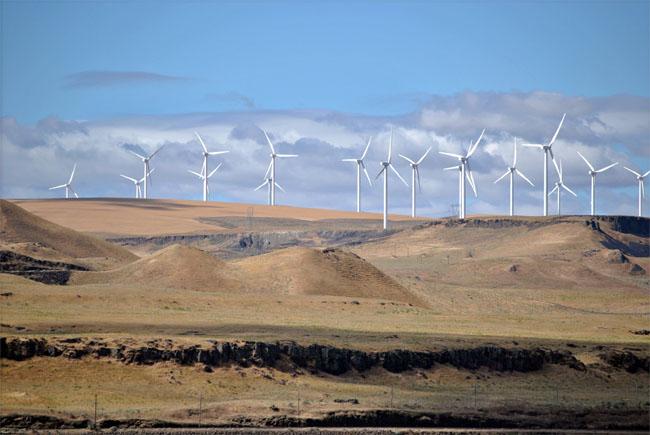
The Shepherds Flat Wind Farm in Oregon.
Steve Wilson, Wikimedia.
America's energy future may be blowing in the wind. As the U.S. moves away from coal-fired electricity, wind power has been growing. The Energy Information Administration estimates that in 2017 wind power in the U.S. will grow another 11 percent.
But wind turbines don't last forever, said Xcel Energy spokesperson Mark Stutz.
"Wind farms, at the end of the day, are equipment. And equipment wears out over time," he said.
The lifespan of the average turbine is 20 to 25 years. While new wind farms are going up, America's first generation of wind farms are reaching retirement age, like the Xcel Energy's Ponnequin Wind Farm on the border of Colorado and Wyoming. The farm of 44 turbines recently retired at the average age of 18 years old. In October of 2016, Xcel Energy plans to dynamite the turbines and cart off the waste to a landfill.
Ponnequin spans government and private land in two states, which makes tearing it down tricky. Unlike coal mines, wind farms aren't required to set aside funds for clean-up. Xcel Energy has promised to completely restore the land when Ponnequin comes down, but across the country, wind farm clean-up is loosely regulated by lease agreements and a patchwork of local rules. There are no binding federal regulations to mandate cleaning up after a wind farm.
And when the giant turbines come down, they can leave a lot of waste behind. The steel towers can be recycled, but the fiberglass blades typically end up in landfills.
At Washington State University in Pullman, Washington, researchers are cutting up and grinding spent turbine blades. They're experimenting with recycling the fiberglass composite material to make decking materials and flooring tiles. But this is just research, not industry mainstream by any means.
Until researchers and the energy industry solve the re-use and recycle puzzle for these massive blades, landfills will continue to be their final destination.